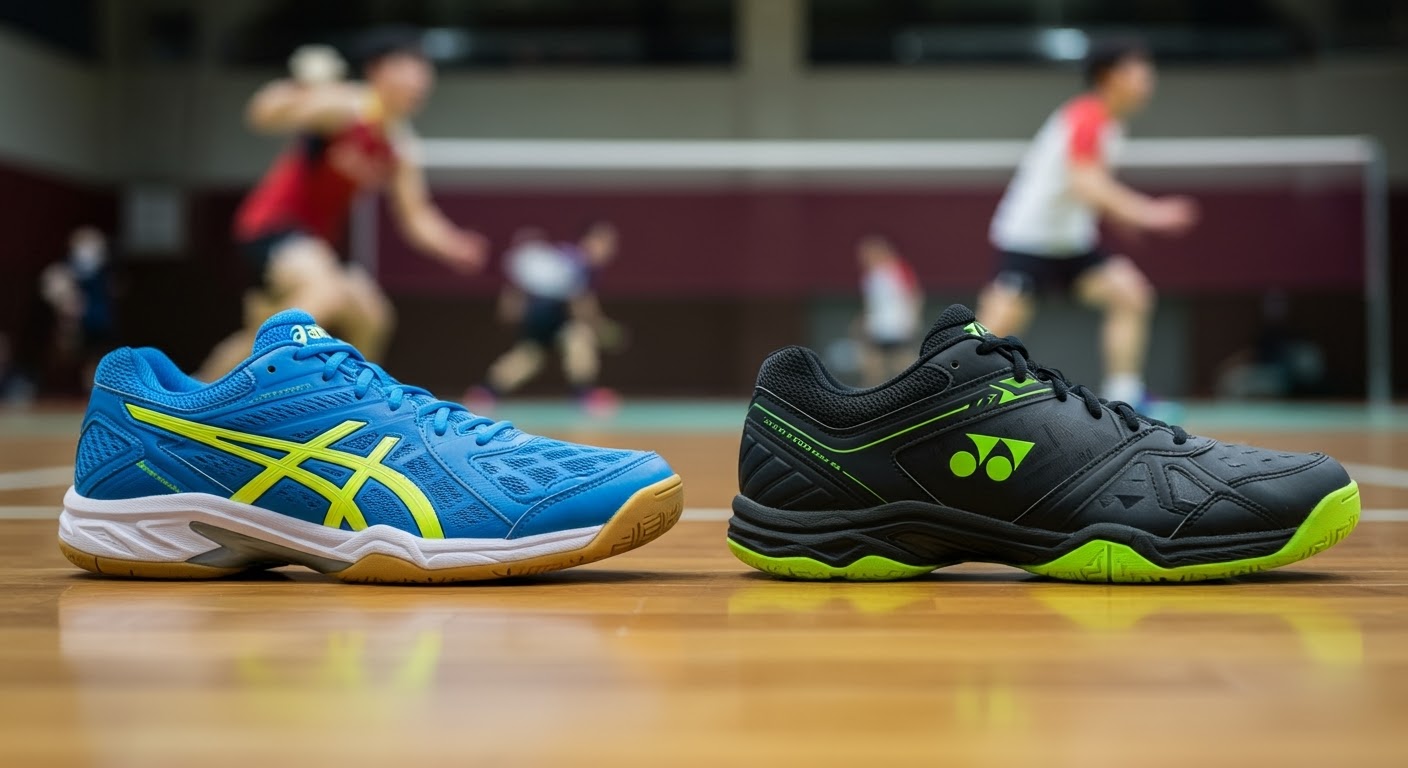Every smash, every lunge, every lightning-fast change of direction in badminton puts immense stress on your feet and joints. That's why choosing the right footwear isn't just about comfort; it's about optimizing your performance and, crucially, preventing injuries. As we navigate 2025, the technology packed into badminton shoes is more advanced than ever, promising an edge to players at every level.
When we talk about top-tier badminton footwear, two names invariably dominate the conversation: ASICS and Yonex. Both brands boast a long-standing reputation for quality and innovation, sponsoring countless professional athletes and being staples in badminton bags worldwide. But which one truly reigns supreme for your game? Let's dive into the ultimate shoe showdown!
ASICS Deep Dive: Innovation and Comfort
ASICS has built its reputation on a foundation of sports science, prioritizing cushioning, stability, and a responsive feel. They've been a powerhouse in running shoes for decades, and that expertise clearly translates to their badminton line.
At the heart of ASICS's technology is their iconic GEL cushioning, strategically placed in the forefoot and rearfoot to absorb impact during aggressive landings and quick pushes. This year, we're seeing even more refined GEL placements for targeted shock absorption. Their FlyteFoam technology also plays a crucial role, providing lightweight cushioning that bounces back, giving you an energetic feel on court.
Top ASICS models you'll encounter in 2025 include:
- GEL-BLADE 8: Often a favorite for agile, fast-moving players, known for its lightweight design and excellent grip for quick multi-directional movements. It's a go-to for doubles specialists who need to cover the court rapidly.
- GEL-RESOLUTION 9: While primarily a tennis shoe, its exceptional stability and cushioning make it a cross-over choice for badminton players seeking maximum support during intense lateral movements. It's built like a tank for foot protection.
- COURT FF 3: Another strong contender, offering a blend of stability, comfort, and responsiveness. Players praise its adaptive fit and robust support for powerful strides.
Pros of ASICS shoes: Exceptional cushioning, strong stability, often a wider fit in the forefoot (beneficial for some foot types), and excellent shock absorption.
Cons of ASICS shoes: Can sometimes feel slightly heavier or bulkier than some minimalist options, and specific models might sacrifice a bit of court feel for maximum cushioning.
Yonex: Power and Durability
Yonex, on the other hand, is synonymous with badminton itself. As a global leader in rackets and apparel, their shoes are designed with the specific demands of the sport in mind: explosive power, quick footwork, and long-lasting durability.
Yonex's signature cushioning technology is Power Cushion, and its enhanced version, Power Cushion+. This unique material is designed to absorb shock and then convert that impact energy into a powerful rebound, propelling you into your next move. It's about responsive cushioning that actively supports your quick bursts of speed. Their shoes also often feature robust uppers designed to withstand the wear and tear of intense court action.
Leading Yonex badminton shoe models for 2025 include:
- SHB 66 Z (and its variants): This series is legendary for its lightweight profile, snug fit, and exceptional agility. It's a top choice for players who prioritize speed and a direct court feel, often favored by singles players.
- SHB 65 Z (and its variants): A hugely popular all-rounder, offering a balanced mix of cushioning, stability, and durability. It’s known for its comfort straight out of the box and reliable performance across different playing styles.
- Power Cushion 03 (and its newer iterations): Focuses heavily on power transfer and shock absorption, providing robust support for explosive movements and aggressive footwork.
Pros of Yonex shoes: Excellent energy return for explosive movements, superb grip, often a sleeker and lighter feel, and renowned durability.
Cons of Yonex shoes: Can sometimes have a narrower fit (especially for those with wider feet), and while cushioned, some players might find the initial feel firmer compared to ASICS GEL.
Head-to-Head Comparison: Key Differences
When pitting these two titans against each other, the differences become clear, catering to distinct player preferences:
- Cushioning & Shock Absorption: ASICS, with its GEL and FlyteFoam, generally offers a softer, more plush initial feel and often superior shock absorption, especially for those with joint concerns. Yonex's Power Cushion+ provides excellent shock absorption with a distinct emphasis on energy rebound, giving a springier, more responsive feel.
- Stability & Support: Both brands excel here, but with slightly different approaches. ASICS often uses external heel counters and midfoot trusses for comprehensive support, appealing to players who need robust lateral stability. Yonex achieves stability through its sole construction and supportive upper materials, often feeling more 'at one' with the foot.
- Court Feel & Agility: Yonex models, particularly the SHB series, often offer a slightly lower profile and more direct court feel, allowing for quicker changes in direction and a very agile sensation. ASICS shoes, while still agile, sometimes prioritize a bit more cushioning which can slightly elevate the foot off the court.
- Durability: Both brands are highly durable, but Yonex has a historical edge, particularly in its upper materials, designed to withstand intense dragging and abrasion.
- Fit: ASICS often provides a slightly roomier toe box, which can be more comfortable for wider feet. Yonex tends to have a narrower, snugger fit, which can be great for those with narrower feet or who prefer a very locked-down feel.
Ultimately, your choice boils down to your individual playing style and physical needs. Are you an aggressive mover needing maximum energy return, or do you prioritize soft landings and all-day comfort?
Conclusion: Your Perfect Fit
The showdown between ASICS and Yonex reveals two formidable contenders, each excelling in distinct areas. ASICS leads with its unparalleled cushioning and plush comfort, making it a fantastic choice for players who value impact absorption and comprehensive support. Yonex shines with its explosive energy return, agile court feel, and exceptional durability, ideal for players who thrive on speed and aggressive footwork.
There's no single "best" shoe; it's about your best fit. Consider your playing style (are you a defensive player needing shock absorption, or an attacking player needing rebound?), your foot shape (do you need a wider or narrower fit?), and any past injury concerns. Trying on models from both brands and performing some on-court movements (if possible) is always the ultimate test.
What are your experiences with ASICS or Yonex badminton shoes? Which brand gives you the edge on the court? Share your thoughts and help fellow players in the comments below!



Share:
Is VAR Ruining the Beautiful Game? Or is it making football fairer?
Tennis Footwork: The Secrets to Exploding Off the Court and Dominating the Rally!